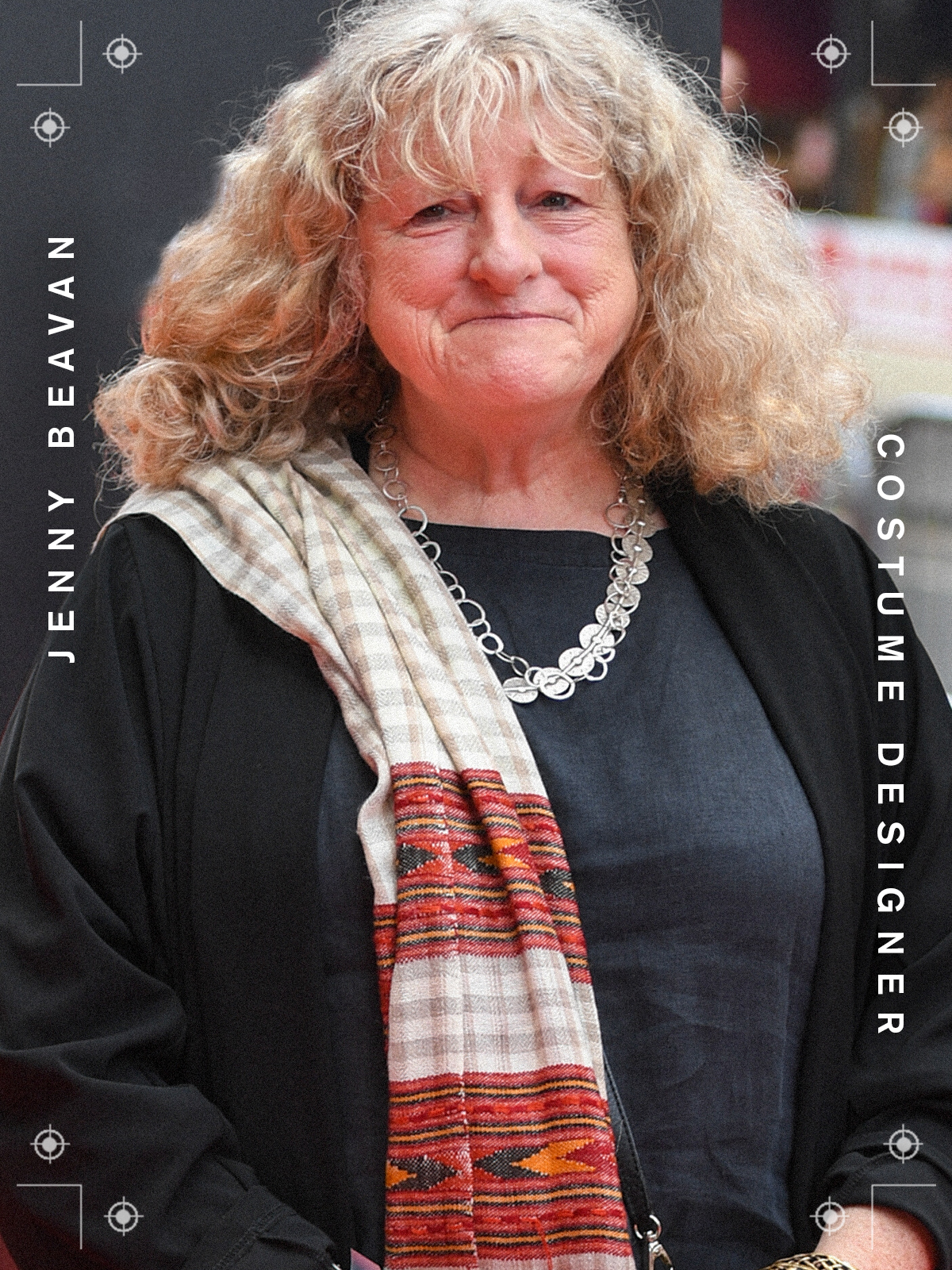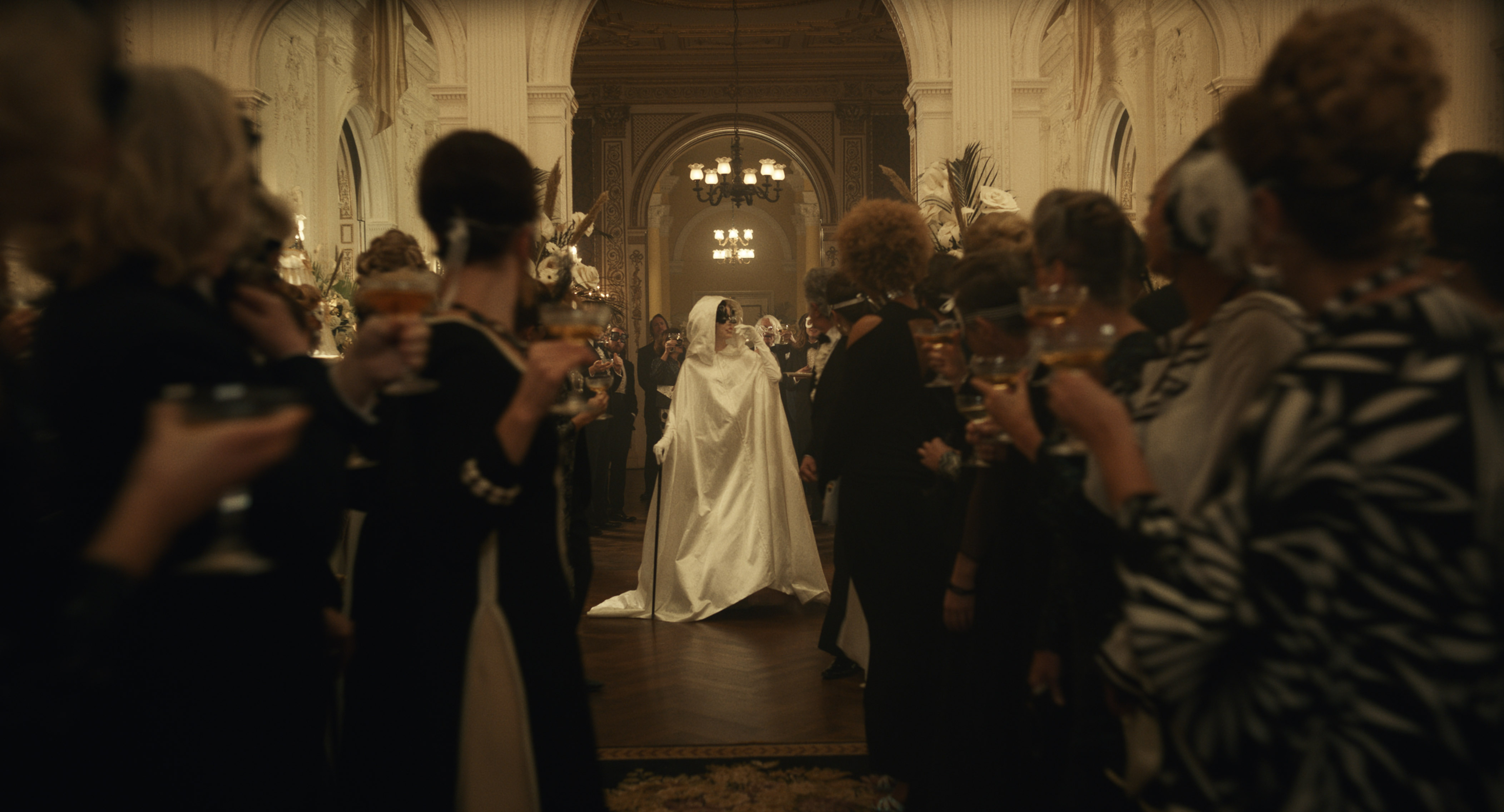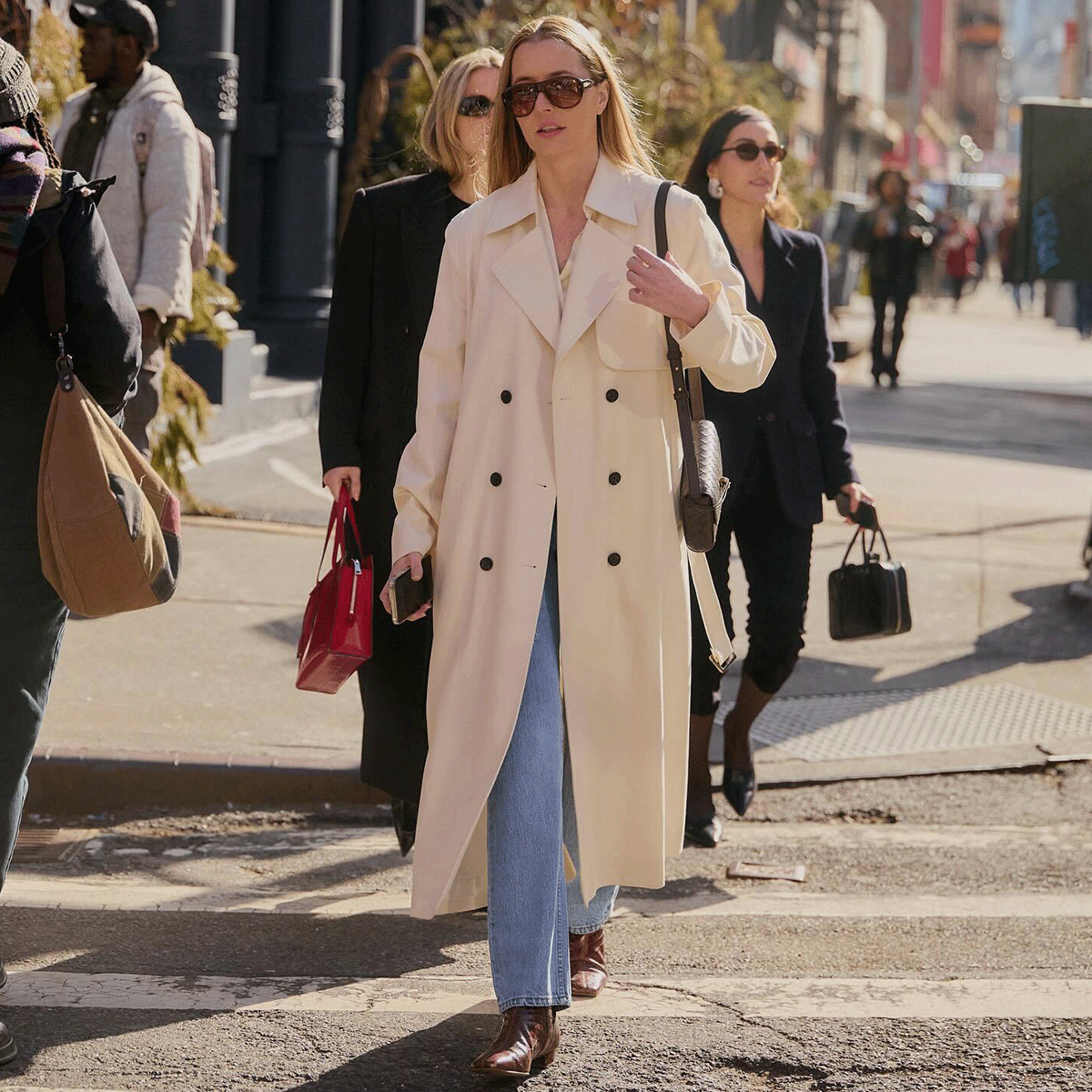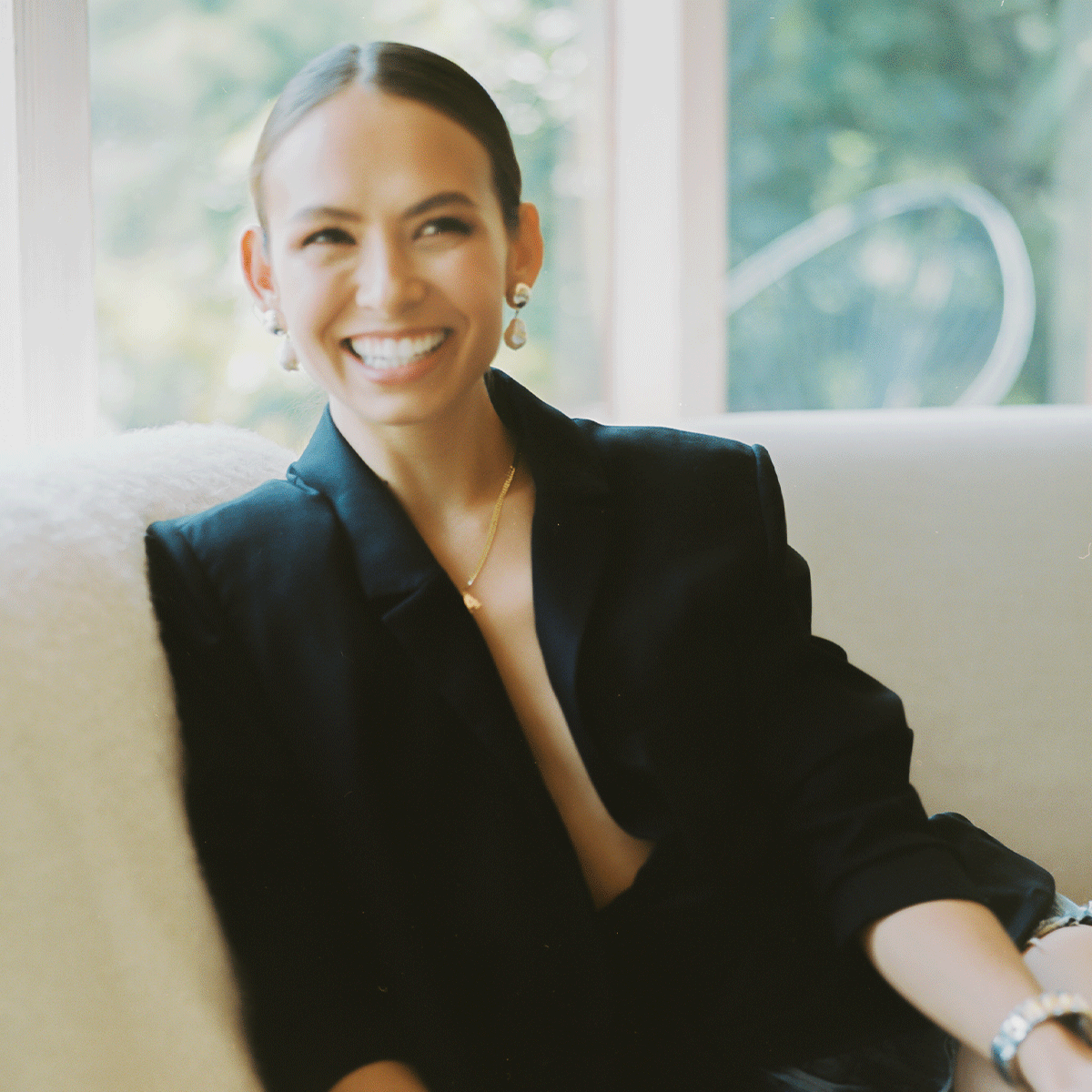Thank Jenny Beavan for All the Stunning Looks Emma Stone Wears in Cruella
Welcome to our new podcast, Who What Wear With Hillary Kerr. Think of it as your direct line to the designers, stylists, beauty experts, editors, and tastemakers who are shaping the fashion and beauty world. Subscribe to Who What Wear With Hillary Kerr on Apple Podcasts and Spotify.

After being nominated for 10 Oscars, we were a little surprised to hear that famed customer designer Jenny Beaven doesn't consider herself a "fashion person." She's built a career out of dressing others and bringing characters from screen to life through a myriad of decades and fantastical realms. Even if you don't quite recognize the name, you'll recognize her work in Mad Max: Fury Road, The King's Speech, Jodie Foster's rendition of Anna and The King, the 1996 remake of Jane Eyre, and countless others. Her latest project places her at the helm of Disney's newest live-action film, Cruella, which sees Emma Stone tackle the origin story of the classic Disney villain. Hear her tell Hillary Kerr all about her inspiration behind Cruella's showstopping looks, her surprise at getting the gig, and how you can start following in her career footsteps.

So, what drew you to Cruella, and what were some of your first creative sparks or ideas for the film? I'm curious about how far out your process begins?
Jenny Beavan: What I did with Cruella (and I do it with pretty much any film), is I assemble a notebook of real clothes. There's '70s stuff in costume houses, there's '70s stuff in vintage stores and markets, and so on. Some of it wasn't probably pure '70s—it was stuff that had a fun element or you could adapt it. Out of that, I dressed up various people on the stand—mannequin stands—a lot and then took it to Emma Stone. It was in that first fitting in her kitchen in Los Angeles that we discovered what was going to be the basis and what would and wouldn't work and what we might be able to use and what we would remake. She seemed to find it enormous fun, and we put on look after look. Then I always photograph everything. Out of the photographs, we made almost like a pack of cards of the different looks and then shuffled them around to see. "That could be a really good early look" and "that could be [for when] she's actually started working for the Baroness." Obviously, [Estella is] making trouble with a reason. And she's certainly making some interesting artistic pieces because you've got to remember, this is 50 years ago now—the '70s.
What people were doing was quite revolutionary then, and she is very much in the sort of Vivienne Westwood world of putting stuff eclectically together and finding her way with pieces. I was able to do that without actually referencing anyone else, but because it was all there and available. And that's what we did in the '70s—we absolutely wore military jackets with fluffy frilly skirts and Doc Martens.

I would love to talk about the black-and-white ball scene and work through it. Ella makes a very subtle entrance by lighting her white hooded, floor-length cape on fire, which turns into a gorgeous crimson gown. What pieces were written into the script? What piece is just your creative freedom? How did you think through that scene?
JB: That scene was scripted, that she comes in obviously to make an entrance. She's there with a mission. So the whole business of the cape being on fire is written in the script. At one point, the dress had more colors in it, but we decided that red was really the stand-out color. If you're in a black-and-white ball and you really want to make an impression, red will be the right one to go for, and I'm very glad we did. That dress also in the script has been made out of one of the baroness' old frocks that she's found in a vintage store, so there had to be a truth and a reality within it, that it was just about possible you could have made this dress out of the dress she finds. I made sure there was just about enough fabric for it to not be completely ridiculous.

I would also like to talk about the Baroness who has a modest 33 wardrobe changes. Her looks are very sculptural and quite stunning. I was hoping that you could talk a little bit about the influence of her character, in particular, and how one goes about constructing some of those pieces?
JB: Well, her character is very much that she is a really good designer. She's a good fashion designer but by now a little old-fashioned. So I looked to the '60s and various influences of the big fashion designers. Vogue being online is a wonderful source of reference. And then I worked with Jane Law—who is a cutter I work with a lot—who is absolutely brilliant. I would go to Jane's studio, the carload of fabric, and we would throw it at the stand and it was all quite sculptural fabric, it all had a real body to it. So if we wanted shoulders to stand out or colors, we had something to start with. It all had real substance and you could really sculpt with it.
Jane is phenomenal, so she brought her input as well, as all good makers do for all costume designers. You're very reliant on your makers, their skills, and their input. That was terribly exciting. I was lucky to find some absolutely fabulous fabrics both in Los Angeles, Atlanta, Georgia, and in England, and I had wonderful buyers. But I do love looking for it myself if I can to get out. Again, you get inspiration when you're feeling your way through a wonderful fabric store. That was just such fun and we found a style for her. She's got a sort of very sculptural, very formfitted, asymmetric style in basically browns and golds. Of course, she has other colors, but brown and gold were key colors, really.

For our listeners who love your career and want to emulate it, want to get into costume design—obviously, that wasn't your first job—I'm wondering if you have any advice for someone who's interested in working in your industry. How they could go about it? What advice you would give someone who is just starting out?
JB: I think I would look at the costume schools. I'm sure there's one at UCLA that Deborah Nadoolman Landis runs. I'm sure there are more in various other parts of the States and England. I certainly am part of the University of the Arts in Bournemouth, which is a big arts university. So I would look at the courses and there are some short courses as well. I would learn every skill you can get. It's really good to know how to sew, how to cut. You don't have to be brilliant at it, but you must understand how it works. It's also good to do dyeing, breakdown, you know, learning all the crafts. And fitting is the main thing you do—whether you're doing it to the crowd out of stock or whether you're fitting an artist in brand new made clothes. All those skills are fantastically useful. And it's really good to work your way up. Start at the bottom, dress people, know what it feels like, see what it feels like. It may not be for you to design. You may be brilliant at organizing [and] and want to be a supervisor, coordinator. You may just really enjoy fitting and working without the pressure of being the designer. But I think learning all the skills is vital. And then remember, you don't do it all at once and you're totally part of a team. When I say you don't do it all at once, [I mean] you're approached in bite-sized chunks—you're not expected to have it all ready on day one like [live] theater. You're very much part of a crew. You are not a fashion designer—it's not all about you. It's about people skills with running a team and being generous with your time and looking after and nurturing and supporting your crew because they will then feel safe and do much better work. And remember, the real definition of the job is that if the director doesn't like it, it's your fault.

This interview has been edited and condensed for clarity. Check out our previous episode featuring body positivity advocate Katie Sturino.
Ray Lowe is a contributing editor for Who What Wear. She's spent the last decade living in New York, but now that she professionally works from home, she's slowly been going back to her roots by splitting time between NYC and L.A. A year ago, she left a four-year stint as a fashion editor for Refinery29 to explore the freelance life. Nowadays, she does just about everything from penning online articles (for Who What Wear, Refinery29, Elle, Cosmo, and many more) to writing scripts, styling, and finding ways to fuse her love for both Disney and fashion. Her main beat is fashion (trends, emerging brands, affordable finds, you name it), but you may find her dropping in with a beauty story every now and then. As for her personal style, she'd best describe it as a balanced blend of basics and contemporary trends, often with a dash of Mickey Mouse thrown in for good measure. In her spare time, she can be found coddling my pets (a French bulldog and a rescue cat), curating travel itineraries for her friends, scrolling through Instagram for up-and-coming brands, and watching so-bad-they're-good films.
-
 The Pistola Founder Shares How She Launched Her Brand
The Pistola Founder Shares How She Launched Her BrandPlus: the denim styles her customers are loving the most.
By Madeline Hill
-
 Founder Violette Serrat on How Violette_FR Went From Having a Cult Following to Launching in Sephora
Founder Violette Serrat on How Violette_FR Went From Having a Cult Following to Launching in SephoraSchool is in session.
By Madeline Hill
-
 Stylist Brad Goreski on His Whirlwind Year of Red Carpet Looks for Demi Moore
Stylist Brad Goreski on His Whirlwind Year of Red Carpet Looks for Demi MoorePlus, how he brought body horror to the red carpet.
By Claire Schmidt
-
 The Top Trends From Fashion Month, According to Our Editors
The Top Trends From Fashion Month, According to Our EditorsThere's a lot to keep track of.
By Madeline Hill
-
 The White Lotus Costume Designer Shares How She Puts Together Those Iconic Looks
The White Lotus Costume Designer Shares How She Puts Together Those Iconic LooksPlus, how she got her start in entertainment.
By Madeline Hill
-
 Our Editor Shares Her 2025 Spring Fashion Predictions
Our Editor Shares Her 2025 Spring Fashion PredictionsPlus, the items you can incorporate into your rotation.
By Madeline Hill
-
 Why Sporty & Rich Founder Emily Oberg Is Launching a Sexual Wellness Line
Why Sporty & Rich Founder Emily Oberg Is Launching a Sexual Wellness LineIt's time for something new.
By Madeline Hill
-
 An Award-Season Debrief With Our Editors, From Trends to Top Looks
An Award-Season Debrief With Our Editors, From Trends to Top LooksPlus, we discuss the stylists who've been at the top of their game all season long.
By Claire Schmidt

